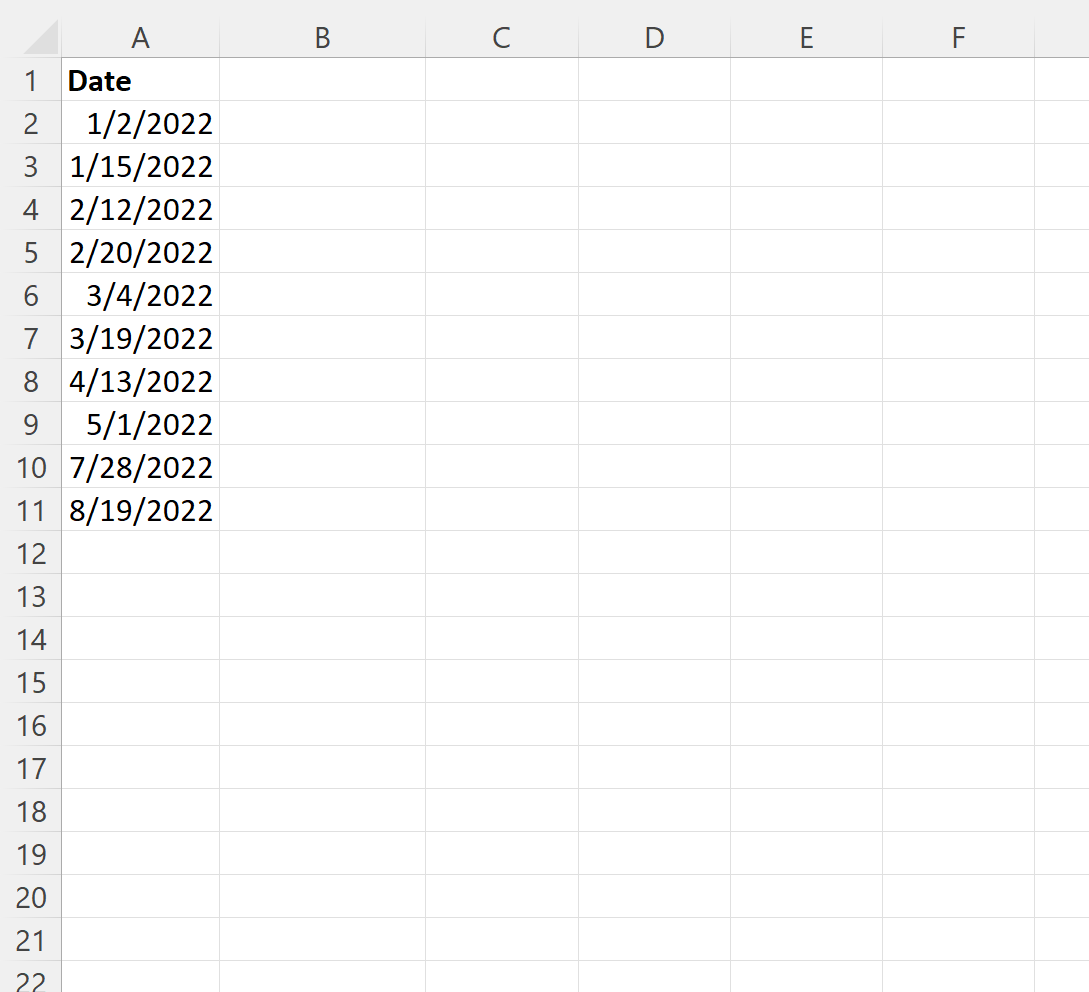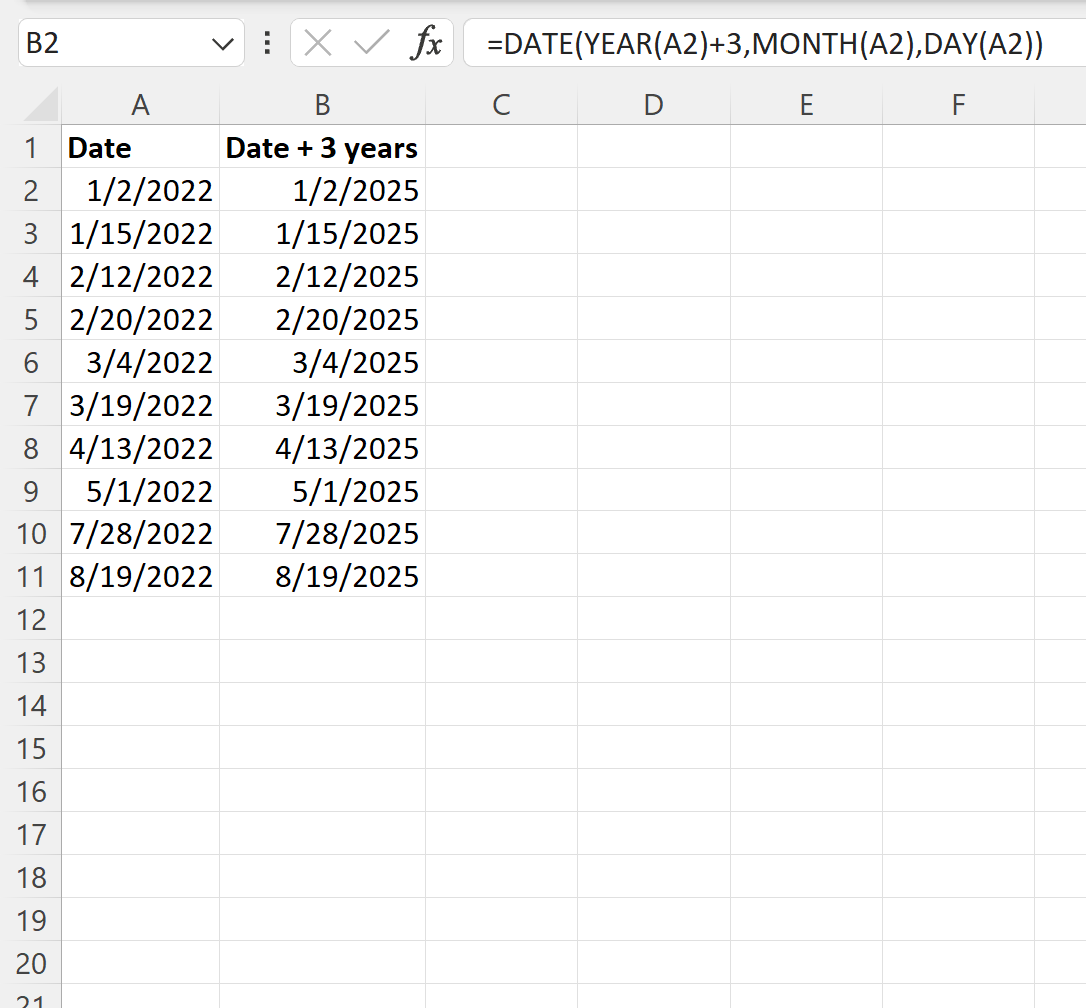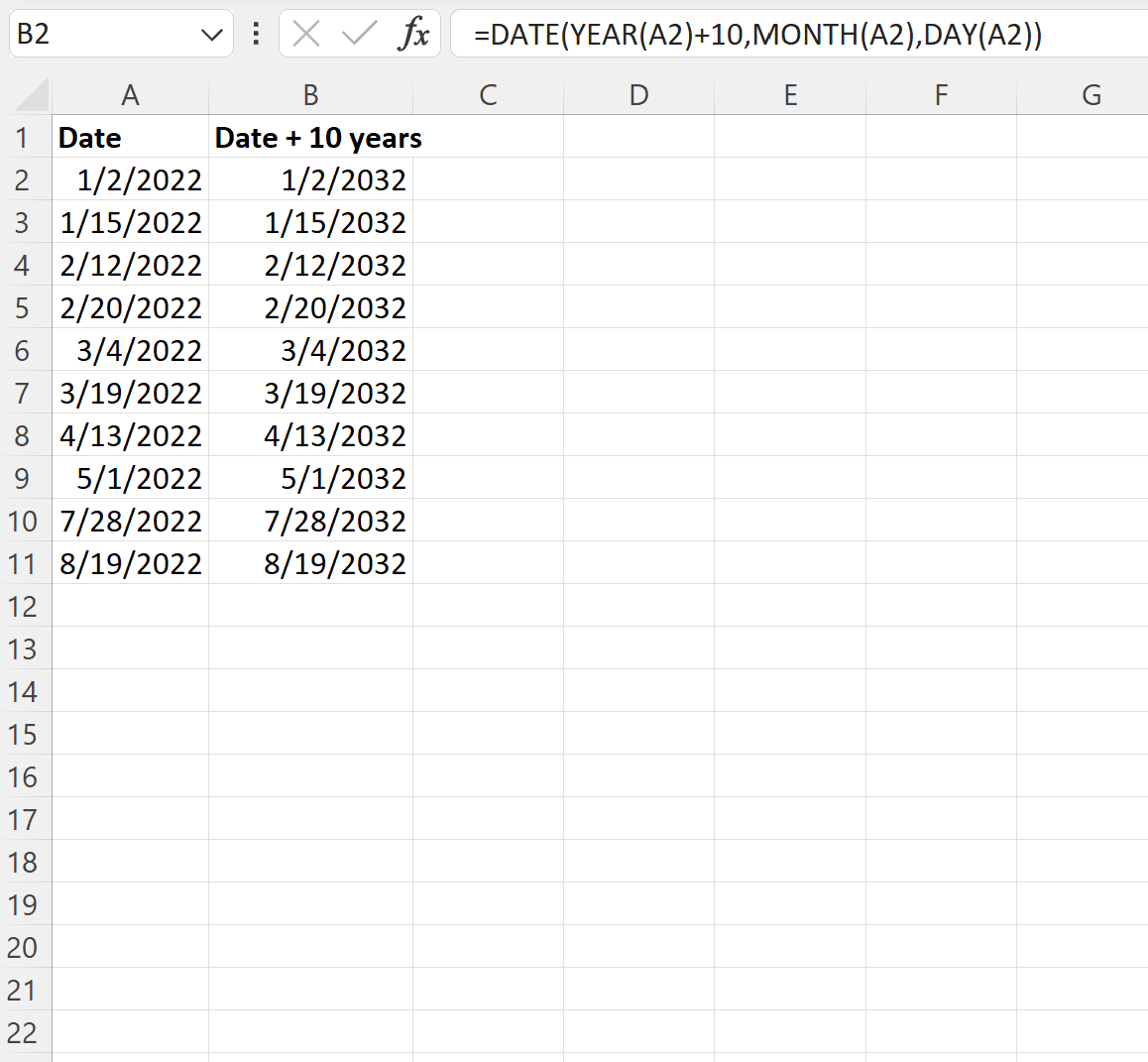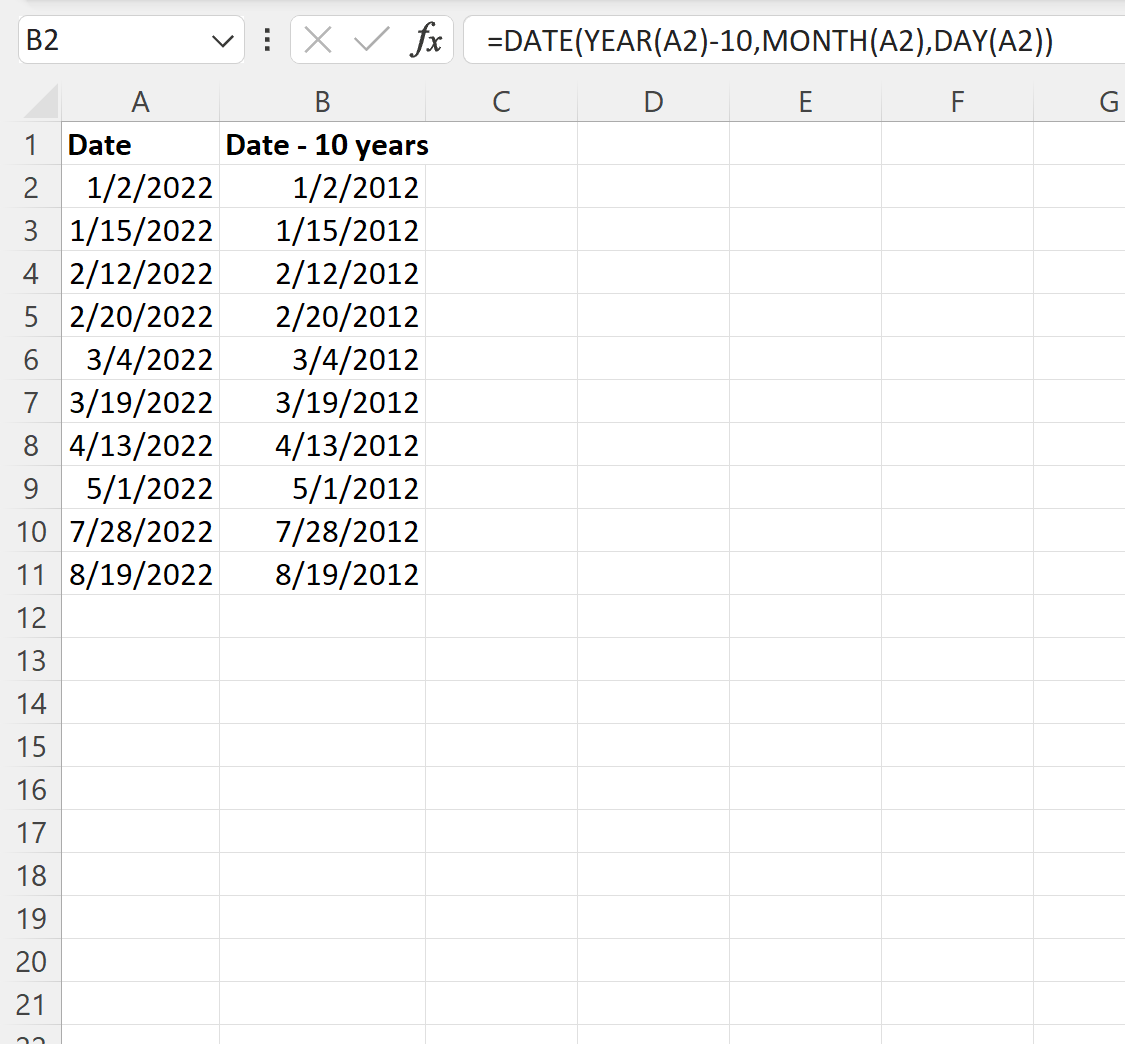You can use the following basic syntax to add years to a date in Excel:
=DATE(YEAR(A2)+3,MONTH(A2),DAY(A2))
This particular formula adds 3 years to the date in cell A2.
To add a different number of years, simply change the 3 in the formula to a different number.
And to subtract a certain number of years from a date, simply use a negative number instead of a positive number in the formula.
The following example shows how to use this syntax in practice.
Example: Add Years to Date in Excel
Suppose we have the following list of dates in Excel:

We can type the following formula into cell B2 to add 3 years to the date in cell A2:
=DATE(YEAR(A2)+3,MONTH(A2),DAY(A2))
We can then drag and fill this formula down to each remaining cell in column B:

Notice that each of the values in column B show the value of the date in column A plus three years.
To add a different number of years, simply change the 3 in the formula to a different number.
For example, we can use the following formula to instead add 10 years to each date:
=DATE(YEAR(A2)+10,MONTH(A2),DAY(A2))

Now each of the values in column B shows the value of the date in column A plus 10 years.
We can also use a negative value in the formula to subtract years.
For example, we can use the following formula to instead subtract 10 years to each date:
=DATE(YEAR(A2)-10,MONTH(A2),DAY(A2))

Now each of the values in column B shows the value of the date in column A minus 10 years.
Note: We wrap the DATE function around the formula to ensure that the result is shown in a date format instead of a numeric format.
Additional Resources
The following tutorials explain how to perform other common tasks in Excel:
How to Convert Days to Months in Excel
How to Calculate Average by Month in Excel
How to Calculate the Number of Months Between Dates in Excel